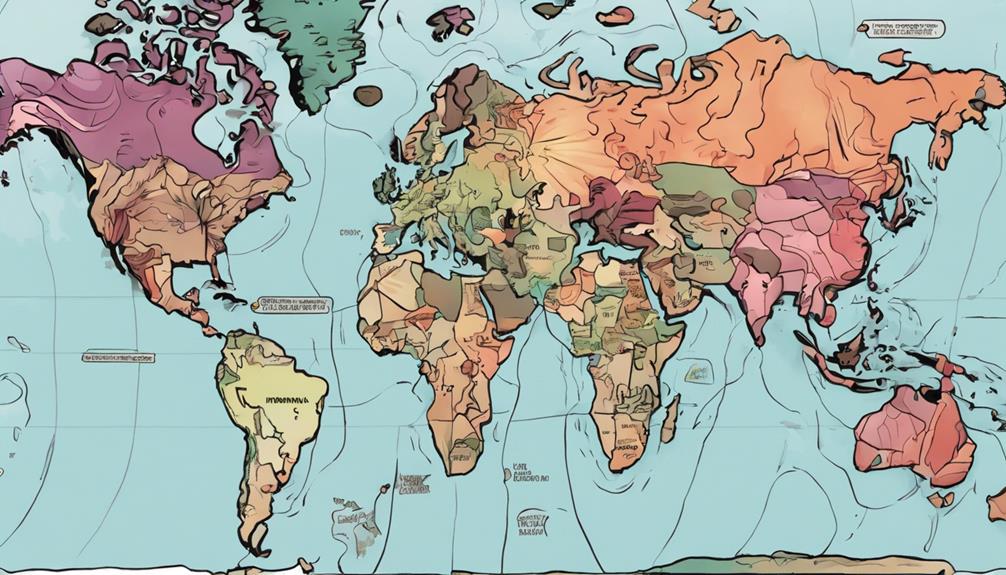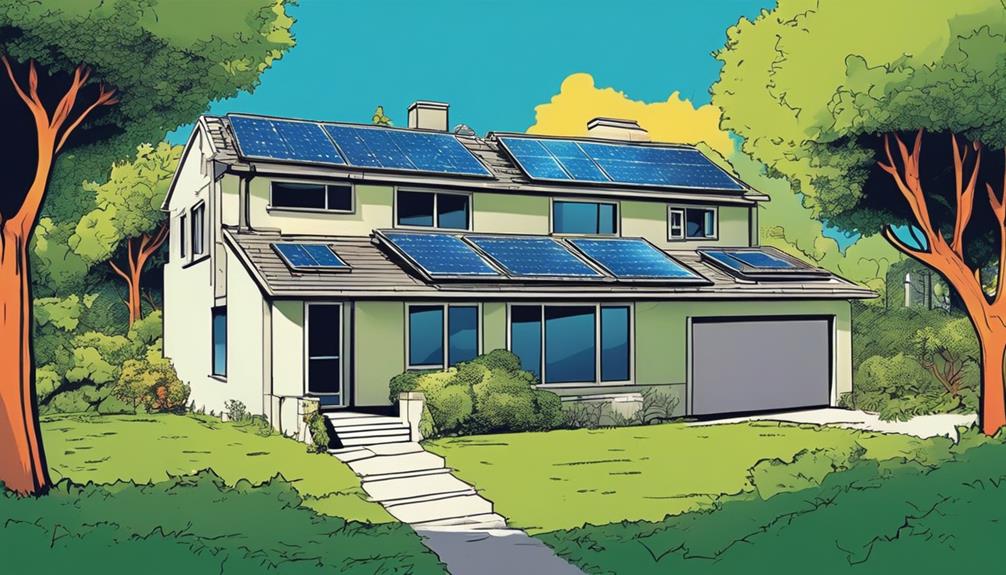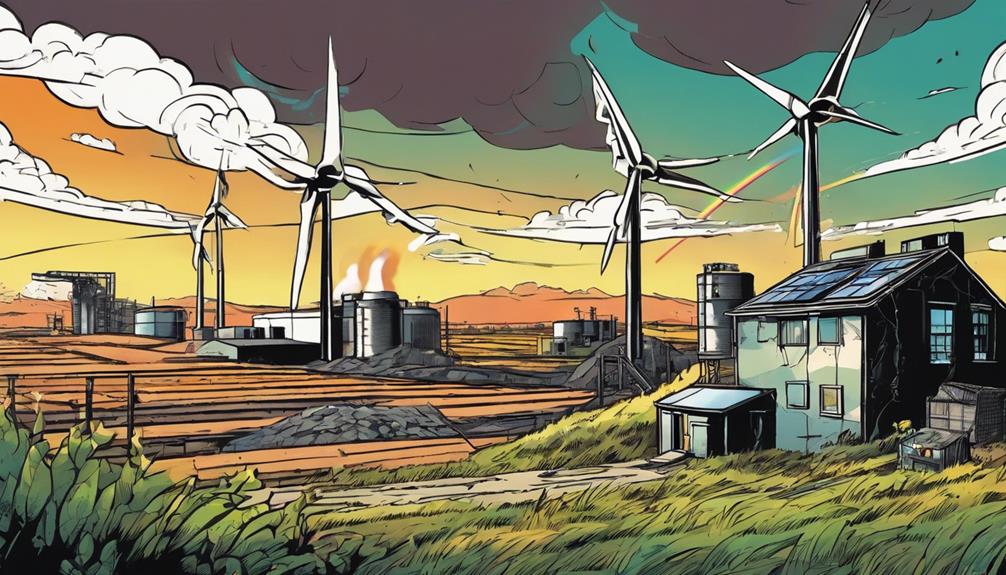Countries like Iceland, El Salvador, New Zealand, Kenya, and the Philippines lead in geothermal energy. Iceland tops the list with its volcanic activity. El Salvador follows, generating over 20% of its electricity sustainably. New Zealand showcases commitment with a geothermal capacity of 1,005 MW. Kenya is rapidly expanding, aiming to reduce fossil fuel usage. The Philippines boasts a capacity of 1,868 MW. The top countries globally for geothermal energy include the United States and Indonesia. These nations harness the Earth's natural heat efficiently. Further details on their success await.
Key Takeaways
- United States leads globally with 3,794 MW capacity in geothermal energy.
- Indonesia follows with 2,356 MW capacity utilizing binary cycle power.
- Philippines boasts 1,868 MW capacity and essential geothermal power contributions.
- Turkey stands out with 1,682 MW capacity and the Kızıldere Geothermal Power Plant.
- New Zealand showcases 1,037 MW capacity emphasizing direct use applications.
Iceland's Leading Geothermal Energy Production
Iceland leads in geothermal energy production due to its abundant volcanic activity, which powers major facilities like the Hellisheidi plant near Reykjavik.
With a geothermal power capacity of 755MW in 2018, Iceland stands out as a global frontrunner in sustainable electricity generation.
The country's geothermal power plants play a pivotal role in meeting its electricity needs, with a significant portion of the generated electricity being supplied to nearby aluminum refineries.
The Hellisheidi power plant, strategically located near the capital, Reykjavik, harnesses Iceland's natural geothermal resources efficiently.
This emphasis on geothermal energy not only showcases Iceland's dedication to sustainable practices but also highlights the diverse applications of geothermal electricity beyond traditional households.
El Salvador's Geothermal Energy Success
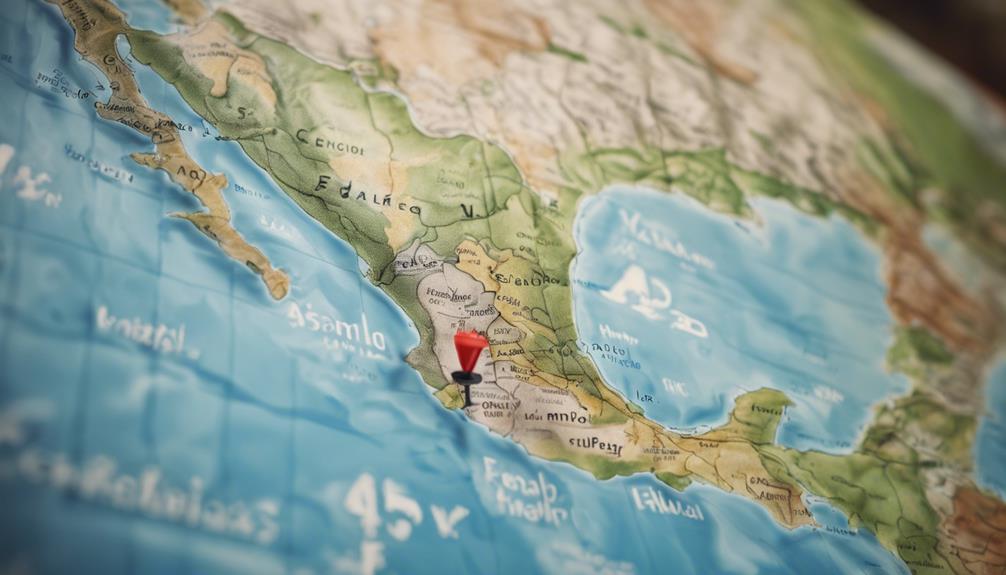
Emerging as another frontrunner in geothermal energy utilization, El Salvador has established itself as a significant player in sustainable electricity generation through its notable reliance on geothermal sources. With over 20% of its electricity being generated from geothermal sources, El Salvador stands out as a leading example of successful integration of renewable energy into its energy mix.
The country's geothermal success can be attributed to the Ahuachapán, Berlín, and San Vicente geothermal fields, with the Geothermal Field being the largest complex in Central America. Since the 1970s, El Salvador has been harnessing its geothermal potential, reducing its dependence on fossil fuels and showcasing the benefits of utilizing a renewable energy source like geothermal energy.
New Zealand's Geothermal Power Achievement

You can learn about New Zealand's remarkable geothermal power achievements and their leading practices in utilizing this sustainable energy source.
The country's geothermal capacity of 1,005 MW in 2018 showcases its significant contribution to the overall energy supply.
Major geothermal power plants like Wairakei, Te Mihi, Nga Awa Purua, and Mokai stations highlight New Zealand's commitment to renewable energy generation.
New Zealand's Geothermal Success
New Zealand stands out globally for its remarkable geothermal success, with a geothermal capacity of 1,005MW in 2018, making a significant contribution to the country's energy supply. The country's utilization of high-temperature geothermal fields has led to the establishment of major geothermal power plants like Wairakei and Te Mihi. Wairakei Power Station, a key facility in New Zealand, plays an essential role in the production of renewable energy, emphasizing the nation's commitment to sustainable practices.
Geothermal energy not only fuels electricity generation but also supports heating and various industrial applications, showcasing New Zealand's dedication to incorporating renewable sources into its energy mix.
New Zealand had a geothermal capacity of 1,005MW in 2018, constituting around 13% of the country's total energy supply.
The Taupo Volcanic Zone in New Zealand hosts high-temperature geothermal fields supporting major geothermal power plants.
Wairakei Power Station is a significant contributor to New Zealand's renewable energy production.
Geothermal energy is vital for electricity generation and other industrial applications, reflecting New Zealand's sustainable energy practices.
Leading Geothermal Practices
Building on New Zealand's geothermal success, the country's leading geothermal practices exemplify a sustainable approach to harnessing clean and reliable energy sources. With an installed geothermal capacity of 1,005 MW and geothermal energy contributing about 13% to the national energy mix, New Zealand stands out as a pioneer in geothermal power generation. The Taupo Volcanic Zone hosts top 10 geothermal power projects like Wairakei, Te Mihi, Nga Awa Purua, and Mokai stations, utilizing the Earth's heat to produce geothermal electricity efficiently.
| Geothermal Power Plant | Capacity (MW) | Contribution to Energy Mix (%) |
|---|---|---|
| Wairakei Power Station | 160 | 2.1 |
| Te Mihi Station | 166 | 2.2 |
| Nga Awa Purua Station | 140 | 1.9 |
These facilities showcase New Zealand's commitment to sustainable practices and the global geothermal community's potential to embrace clean energy solutions. By leveraging geothermal resources effectively, New Zealand sets a solid example for countries seeking to shift towards renewable energy sources.
Kenya's Growing Geothermal Energy Sector
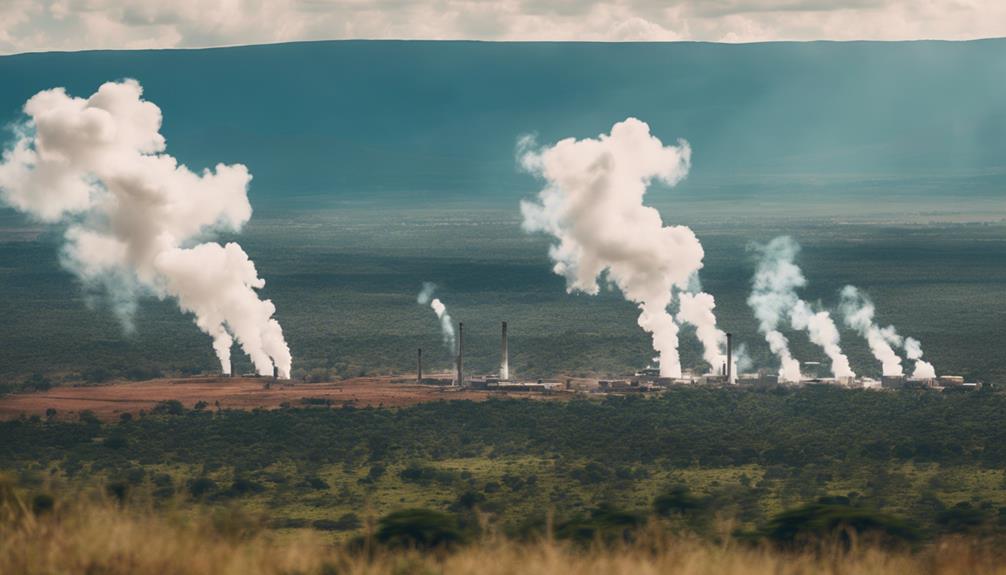
You might be interested to know that Kenya has been making significant strides in expanding its geothermal energy sector, adding 83 MW in 2022 and solidifying its position as a top player in the industry.
The country's commitment to renewable energy is evident through its proactive approach to sustainable power generation, exemplified by projects like the Olkaria V plant.
With a focus on diversifying its energy mix and reducing reliance on fossil fuels, Kenya's geothermal sector is paving the way for a promising future in the global geothermal energy market.
Kenya's Geothermal Expansion
Kenya's geothermal sector has surged ahead, adding 83 MW of capacity in 2022, solidifying its position as a leader in renewable energy development. This growth in Kenya's geothermal capacity is a significant milestone in the country's journey towards sustainable energy sources.
Here are some key points highlighting Kenya's geothermal expansion:
- Capacity Boost: Kenya's geothermal projects have increased the country's installed capacity for geothermal power generation.
- Renewable Energy Focus: The expansion of Kenya's geothermal sector underscores the nation's commitment to renewable energy sources.
- Power Generation: The added capacity contributes to Kenya's overall power generation capabilities, meeting the country's increasing energy demands.
- Global Market Player: With ongoing investments and projects, Kenya is establishing itself as a key player in the global geothermal energy market.
Kenya's progress in geothermal energy not only benefits the country's energy needs but also sets a positive example for sustainable development on a global scale.
Success in Geothermal
With significant growth in its geothermal energy sector, Kenya has added 83 MW of capacity in 2022. The country's success in geothermal energy is evident through its expansion of geothermal power stations like the ones in the Olkaria and Menengai fields.
Kenya stands out as a leading producer of geothermal energy globally, boasting a high installed geothermal power capacity. The development of binary cycle technology has further propelled Kenya's geothermal energy capacity expansion, solidifying its position as a key player in the renewable energy sector.
Geothermal energy plays a pivotal role in Kenya's energy mix, offering a sustainable and reliable power supply that reduces dependency on fossil fuels. This success underscores Kenya's dedication to renewable energy sources and underscores its commitment to a greener future.
Future Geothermal Potential
Showing remarkable growth, the future potential of Kenya's geothermal energy sector continues to shine brightly as it expands its capacity and solidifies its position in the global geothermal energy landscape. With a commitment to sustainable and renewable energy sources, Kenya is actively tapping into its geothermal potential, making significant strides in the market.
Here are some key points highlighting Kenya's future development in geothermal energy:
- Kenya added 83 MW of geothermal capacity in 2022, showcasing substantial growth.
- The country ranks among the top 3 nations contributing to the global geothermal power generation increase.
- Kenya's focus on sustainable energy sources positions it as a key player in the geothermal energy landscape.
- Ongoing developments and expansions in geothermal capacity indicate Kenya's readiness to lead in the global geothermal power market.
Philippines' Notable Geothermal Power Presence
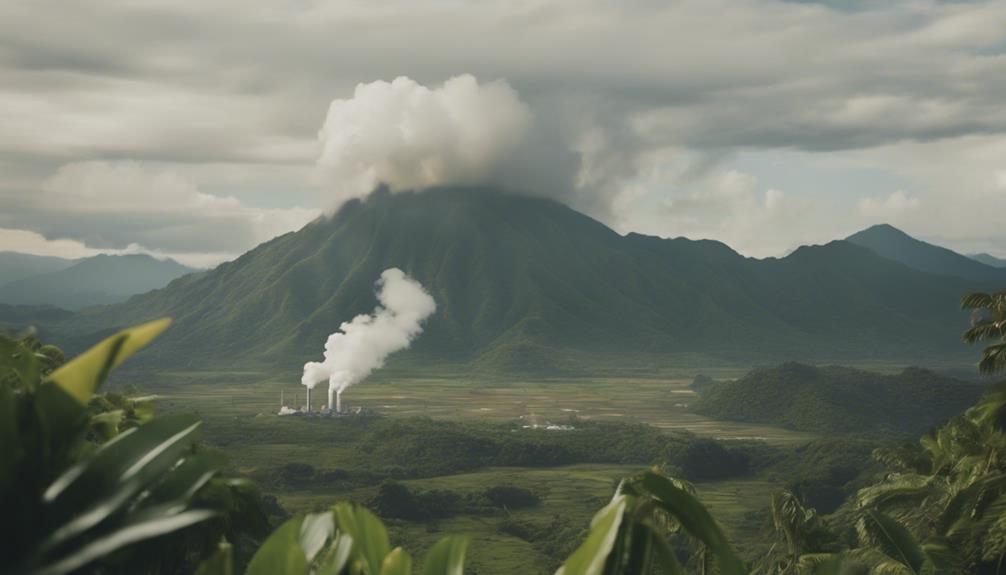
The Philippines stands out as a significant player in geothermal energy production, boasting a geothermal power capacity of approximately 1,868 MW in 2018. With major geothermal power plants like the Makban Geothermal Complex, which sprawls across 700 hectares in Laguna and Batangas provinces, the Philippines has made significant strides in utilizing geothermal energy.
Owned by AP Renewables, the Makban Geothermal Complex is a key contributor to the country's renewable energy mix. Geothermal energy plays an essential role in the Philippines' electricity supply, underlining the nation's dedication to sustainable power sources.
The country's commitment to harnessing geothermal power hasn't only helped diversify its energy sources but has also positioned it as a leader in renewable energy production. Through the development and utilization of geothermal resources, the Philippines is making substantial contributions towards a greener and more sustainable energy future.
Exploring Geothermal Energy in Top Countries

Among the top countries leading in geothermal energy production are the United States, Indonesia, the Philippines, Turkey, and New Zealand.
- The United States boasts the largest geothermal power capacity globally, with 3,794 MW operational, utilizing high-temperature resources efficiently.
- Indonesia follows closely, with 2,356 MW capacity, implementing binary cycle power in plants like Gunung Salak and Sarulla 1.
- Turkey stands out with 1,682 MW of geothermal capacity, featuring the Kızıldere Geothermal Power Plant in Denizli Province.
- New Zealand's 1,037 MW capacity stood out, utilizing direct use applications and hosting significant plants like Wairakei and Te Mihi in achieving their renewable energy goals.
Frequently Asked Questions
Which Countries Have the Most Geothermal Energy?
When looking at countries with the most geothermal energy, you'll find that the United States, Indonesia, the Philippines, Turkey, and New Zealand top the list. These nations lead in harnessing geothermal power for sustainable energy production.
Where Is Geothermal Energy Most Concentrated?
Geothermal energy is most concentrated in countries like Iceland, El Salvador, New Zealand, Kenya, and the Philippines. They generate over 15% of electricity from geothermal sources, showcasing a significant reliance on this renewable energy.
Where Is Geothermal Energy Most Available?
Feeling the heat? Geothermal energy is most available in countries like the U.S., Indonesia, the Philippines, Turkey, and New Zealand. These places are sizzling with geothermal power ranging from 1,005 MW to 3,794 MW!
Which Country Uses Geothermal for 90% of Their Energy?
You use geothermal energy for 90% of your energy consumption, just like Iceland. Geothermal power provides you with electricity and heat, reducing your reliance on fossil fuels. Embrace your abundant geothermal resources!
How Does the Concentration of Geothermal Energy in a Country Affect the Return on Investment Time?
The concentration of geothermal energy in a country significantly affects the geothermal energy return on investment (ROI) time. Countries with higher concentrations of geothermal energy can achieve a quicker ROI due to lower initial development and operational costs. This can make geothermal energy a more attractive investment option for those countries.
Conclusion
So there you have it – Iceland, El Salvador, New Zealand, Kenya, and the Philippines are the top countries with the highest concentration of geothermal energy.
These nations are like shining beacons of renewable energy, harnessing the Earth's natural power to create a sustainable future.
